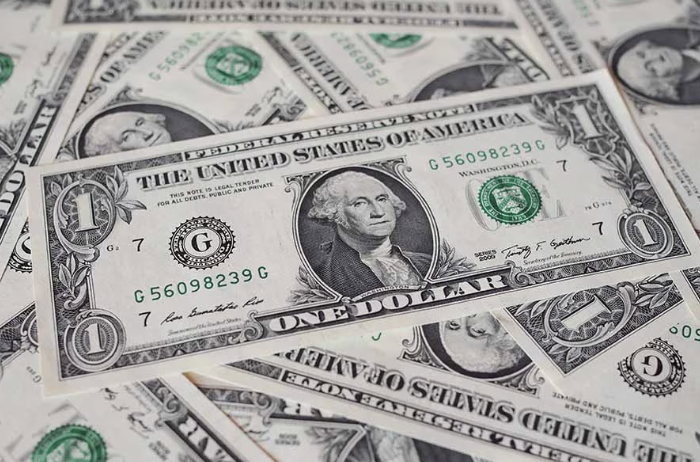The authorities have taken control of First Republic Bank, and most of the assets are sold to JPMorgan Chase. The banking collapse is the second largest in US history. At the same time the dollar is plummeting in value and the petrodollar’s unique position is under threat.
The authorities in California and the bank guarantee fund FDIC announced on Monday that an agreement had been reached, reports NTB.
JPMorgan Chase takes over all the deposits and most of the values. The cost to the FDIC is estimated to be approximately $13 billion.
First Republic Bank has been struggling since Silicon Valley Bank and crypto-oriented Signature Bank went under in March.
The banking crisis in the US also spread to Europe, where the Swiss authorities had to oversee that the giant Credit Suisse was taken over by rival UBS.
The Ministry of Finance in the United States believes that it is positive that the FDIC, which is a federal insurance system for the banking system, will not have to pay more than 13 billion dollars. All bank customers are now be guaranteed to keep their deposits.
The authorities invited us and others to step in, and we did, says Jamie Dimon, CEO and chairman of JPMorgan Chase.
JPMorgan takes control of the $92 billion in deposits, but also $173 billion in outstanding loans, according to the Wall Street Journal. The FDIC must cover half of any losses on lending.
JPMorgan also said it would receive $50 billion in financing from the FDIC.
Many of the customers of First Republic Bank were very wealthy, a large proportion of these were supporters of the Democrats, just like the wealthy customers of Silicon Valley Bank. Some believe that this is the explanation for why the FDIC exceeded its maximum limit on guarantees to also apply to deposits over 250,000 dollars.
Dollar under pressure
At the same time, the Wall Street Journal reports that the dollar is under strong pressure.
The U.S. economy no longer looks so exceptional. That is bad news for the dollar.
The greenback has fallen 8.6% from a peak in September, as tracked by the WSJ Dollar Index, and is experiencing its worst start to the year since 2018.
The falling value of the dollar probably contributed to the bank collapse. Silicon Valley Bank had a large portion of its investments placed in government bonds, which lost value as a result of the inflation brought on by Biden’s massive money printing and government waste.
The main reason for the collapse of First Republic, which was triggered by panic withdrawals, was that this bank also bet and missed completely on how interest rates would develop.
Now investors are betting on the exact opposite to what the collapsed banks did.
Investors are betting the U.S. currency has further to fall as the Federal Reserve nears the end of its most aggressive program of interest-rate increases since the 1980s.
Confidence in the banking system in the United States has been weakened, after three of the four largest bank collapses in the history of the United States, occured within a few months. Many economists fear that the US is heading into a recession. The federal government debt is 130 percent of GDP, which exceeds the debt that triggered the crisis in Greece. Since Biden has increased the amount of money by 40 percent in just two years, the national debt is about to hit the ceiling. Biden refuses to negotiate with the Republicans on public savings.
The Federal Reserve is expected to raise interest rates by 0.25 percent this week, then attempt to pause rate hikes. Maybe the Fed finally understands that you can’t fight inflation with interest rate hikes. As long as the green hysteria and massive money printing continues, Biden seems to believe that all is well with the American economy, even though all the numbers show otherwise.
At the same time, the hegemony of the petrodollar is threatened by a possible collaboration between the so-called BRIC countries and Saudi Arabia. This could lead to an economic disaster for the United States having lost its energy independence within a few days of Biden taking over.
Only the mismanaged Norwegian krone is falling in value against the dollar.
However, it should be noted that the dollar rose quite strongly from mid-2020 until September 2022, but then the fall started. Most economists consider it good news for the world economy that the dollar is falling in value, without this being any particular consolation for American taxpayers, who stand to lose, in the same way as the Norwegian taxpayers.
That the Feds appear to reduce interest rate increases faster than the European Central Bank will intensify the pressure on the dollar.
Rate differentials are a crucial driver of currency markets, as higher rates draw investors in search of yield.
The Chinese are moving ahead in terms of economic growth, as they ignore the green shift except in pure party speeches.
The International Monetary Fund expects the expansion in the U.S. gross domestic product to slow to 1.1% next year and eurozone GDP to rise 1.4%, while it sees Chinese growth at 4.5%.
Historically, the weakening of the dollar has been short-term, but it is not certain that history will repeat itself this time. The economic problems run too deep and the Biden regime does not seem particularly interested in repairing the damage.

